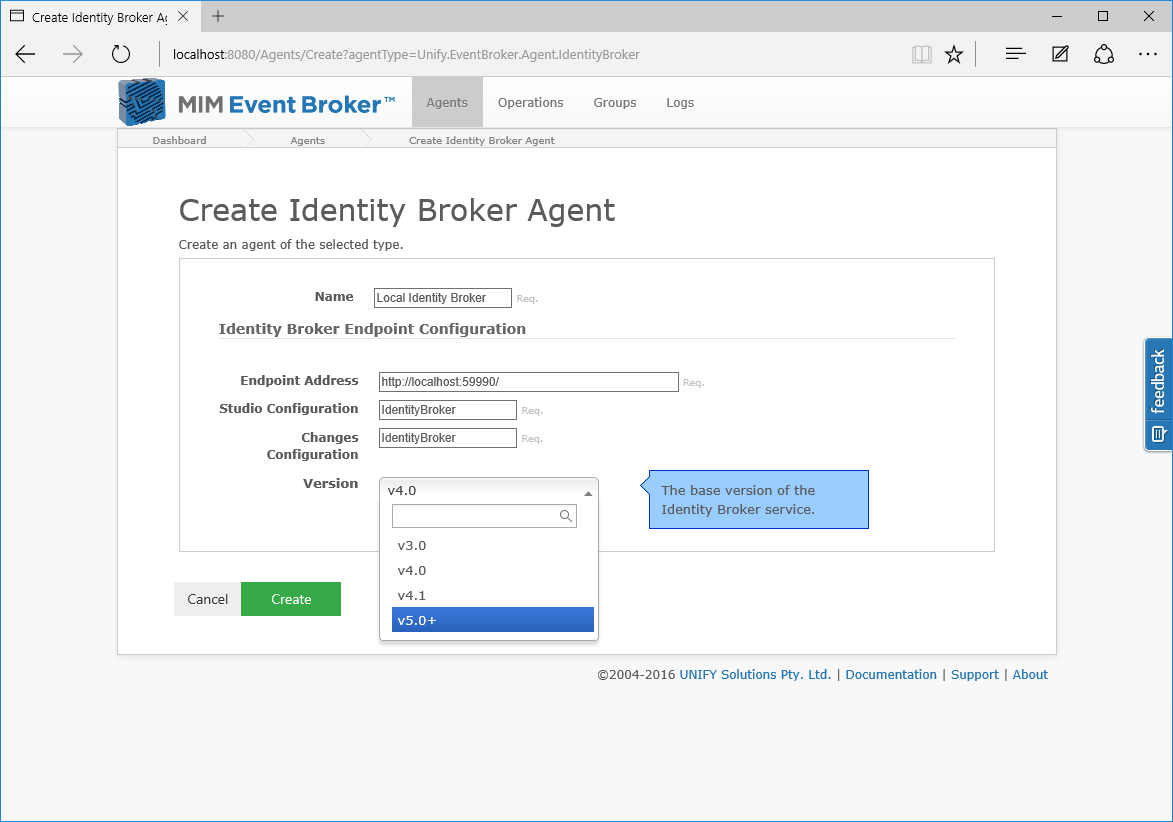Identity Broker Agent
Overview
A Identity Broker agent encapsulates the connection details to a single instance of Identity Broker v3.0 to v5.0.x. This agent is responsible for WCF based connections to Identity Broker for the purpose of checking for changes.
Operational Considerations
An incorrect configured Identity Broker agent will affect every operation attached to it.
Usages
The Identity Broker agent is used by the following Operations:
- Identity Broker Changes operation
Configuration
In addition to the common agent configuration settings shared by all agents, the Identity Broker agent requires the following by way of configuration:
| Name | Description |
|---|---|
| Endpoint Address | The base URI of the Identity Broker service. In a standard installation, this will be of the format: http://IdentityBrokerServer:59990/
|
| Studio Configuration | The Identity Broker endpoint configuration name for the Identity Broker service, used by the Identity Broker Changes operation to retrieve a list of adapters - this corresponds to the Identity Broker endpoint configuration details specified in the Identity Broker service configuration, and related UNIFYNow configuration. In a standard installation, this is set to IdentityBroker. This value should match the name attribute of the endpoint element with the contract IIdentityBrokerEngineNotificationCollector in the Unify.Service.Event.exe.config file (see below).
|
| Changes Configuration |
The Identity Broker endpoint configuration name for the Identity Broker changes service, used by the Identity Broker Changes operation to check for changes - this corresponds to the Identity Broker endpoint configuration details specified in the Identity Broker configuration, and related UNIFYNow configuration. In a standard installation, this is usually IdentityBroker. This should match the name attribute of the endpoint element with the contract Unify.Framework.IChangesAvailableAdapter in the Unify.Service.Event.exe.config file (see below).
|
| Version |
The target version of Identity Broker. |
In order to successfully communicate with an Identity Broker instance, the following configuration must first be correct in the Unify.Service.Event.exe.config file (located in the Event Broker/Services directory). This defines the Microsoft Windows Communication Foundation (WCF) client end-point configuration used to contact the Identity Broker service. This can be found within the system.serviceModel element in the configuration.
<client> <endpoint binding="basicHttpBinding" contract="IIdentityBrokerEngineNotificationCollector" bindingConfiguration="StreamingFileTransferServicesBinding" name="IdentityBroker" /> <endpoint binding="basicHttpBinding" contract="Unify.Framework.IChangesAvailableAdapter" bindingConfiguration="StreamingFileTransferServicesBinding" name="IdentityBroker" /> </client>
Note that the above endpoint information should be correctly configured for each instance of Identity Broker that is required. Following changes to this configuration, the UNIFYNow service must be restarted.

Notes
For more information, review the UNIFYBroker Documentation.
Customer support service by UserEcho

